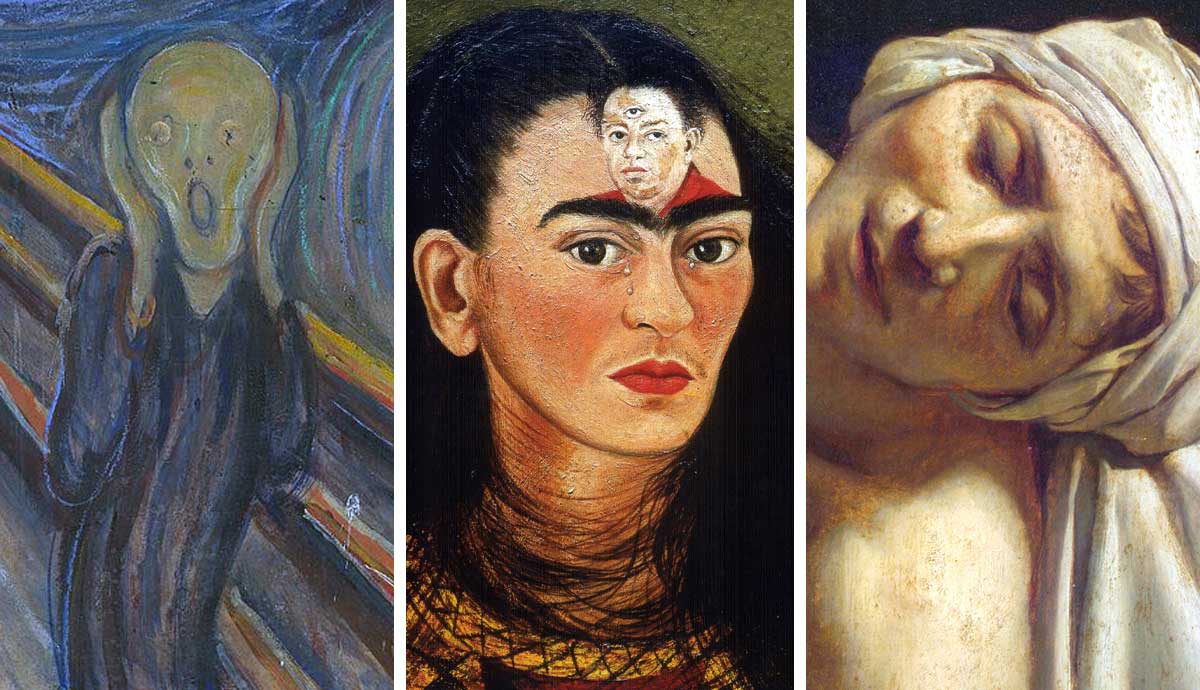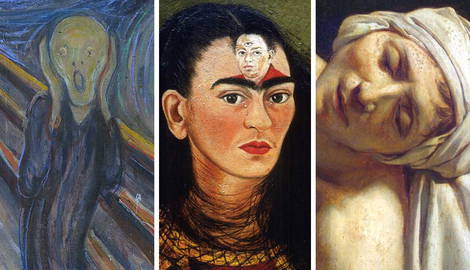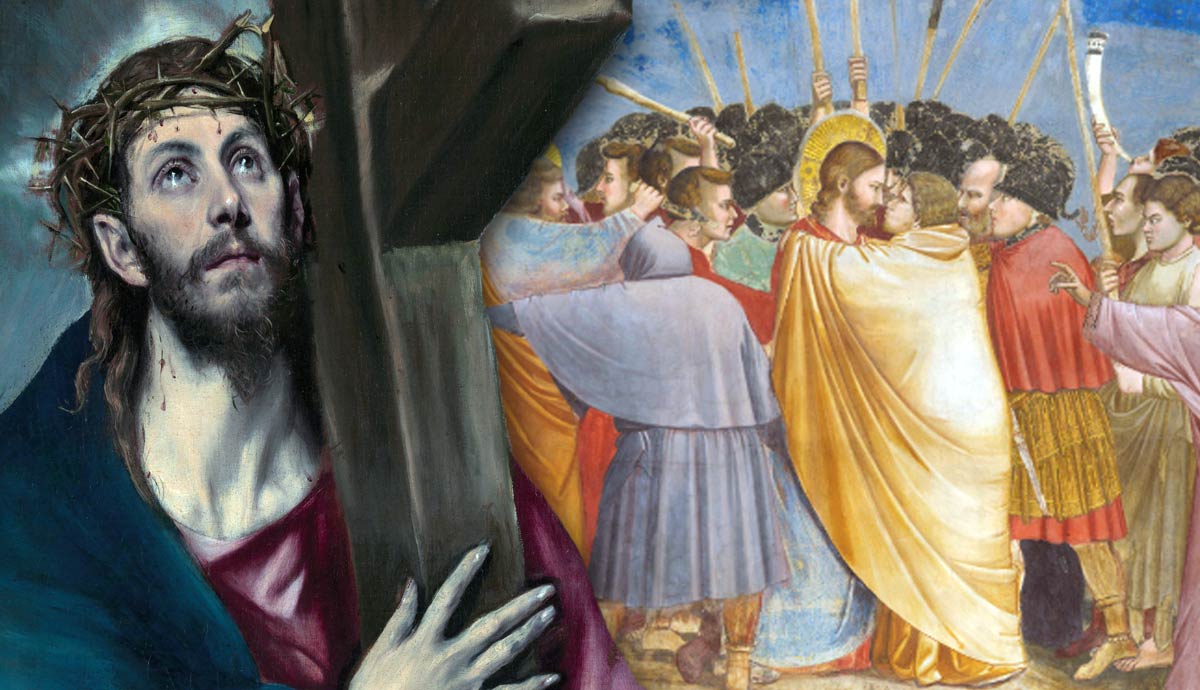
Inspiration is a powerful force that ignites creativity. It is essential for artists striving to create masterpieces. Every work of art originates from a unique spark influenced by various sources, such as significant historical events, personal experiences, mythology, literature, intense emotions, and even lunacy. Without inspiration, the path to creating true masterpieces would be dimmed, lacking the emotional energy and originality that make art truly resonate. Read on to explore the artistic inspiration behind iconic paintings.
1. “The Death of Marat” by Jacques-Louis David

One of the most famous artworks inspired by historical events is The Death of Marat by Jacques-Louis David. Created in 1793 during the turbulent period of the French Revolution, it depicts the assassination of the revolutionary Jean-Paul Marat by one of his political enemies, Charlotte Corday. This artwork serves as David’s tribute to Marat, who was a close friend and comrade-in-arms.
David emphasizes Marat’s martyrdom, excluding his killer from the scene. The victim is shown in his bathtub—a place where he often found relief for his skin condition—holding a pen and a letter. The letter reveals the identity of his killer, while the bathtub and the brochure of the newspaper he worked on are stained with blood. This pose is reminiscent of Michelangelo’s Pietà, reinforcing Marat’s status as a revolutionary hero and symbol of tragic sacrifice.
The painting functions as propaganda, strategically designed to promote the revolutionary struggle. As a passionate advocate of revanchist ideals, David used his art to inspire loyalty among the followers of political subversion. This masterpiece remains a lasting symbol of the French Revolution.
2. “The Massacre at Chios” by Eugène Delacroix

Another famous painting inspired by historical events is the Massacre at Chios. It was the second major oil painting by the French artist Eugène Delacroix. It vividly depicts the horror of the Ottoman invasion of the Greek island Chios, which began on April 12, 1822. This campaign resulted in the death of 20,000 civilians and the enslavement of almost all the surviving inhabitants.
In a frieze-like arrangement, Delacroix illustrates the locals experiencing moments of death and despair, emphasizing the brutal consequences of war. He sought recognition through this work and became fully committed to it after the atrocities were brought to light. The Massacre at Chios was exhibited at the Salon of 1824 under the title Scènes des Massacres de Scio, alongside Jean Auguste Dominique Ingres’ painting The Oath of Louis XIII. This sparked a rivalry between the two artists and intensified their competition. Critics gave it mixed reviews; some saw it as just a depiction of the plague, while others considered it a masterpiece. The state purchased the painting for 6,000 francs, and in November 1874 it was transferred to the Louvre Museum.
3. “The Scream” by Edvard Munch

Many artists draw inspiration not only from significant historical events but also from their own histories. One of the most famous artworks that was inspired by an artist’s personal experience is The Scream by Edvard Munch. Created in 1893, this masterpiece reflects Edvard Munch’s feelings of anxiety experienced during a sunset walk. He described it as an “infinite scream through nature” as the sky turned red.
Munch produced four versions of this piece using various mediums. This painting has a notable history—it was stolen twice, and it became the most expensive artwork ever sold at auction at the time. Accompanied by Munch’s diary entries and poems, The Scream is part of The Frieze of Life series. A series exploring themes of love, illness, anxiety, and death, reflecting the tragedies of Munch’s life.
The main questions about the work revolve around whether it serves as a self-portrait and whether the figure is screaming or repelling screams. Regardless of these interpretations, the piece symbolizes the anxiety of modern humanity and reflects universal emotions, encouraging viewers to contemplate their own experiences.
4. “Portrait of My Dead Brother” by Salvador Dali

Another artist who drew heavily from his personal experiences was the famous Surrealist Salvador Dali. His painting, Portrait of My Dead Brother, reflects his complex relationship with his deceased brother, who died of meningitis when he was only seven, three years before Dali was born. Named after his brother, Dali often felt like a replacement, leading him to develop eccentric behavior as he grappled with his brother’s shadow.
In this remarkable masterpiece, the portrait of a young man is depicted in Surrealist style. His image is formed by light and dark dots that represent cherries. These cherries come together to create the face of Dali’s brother. In the center, two light-colored cherries (representing Dali) and two dark-colored (representing his deceased brother) form a molecule, symbolizing their intertwined identities.
The painting combines surrealistic imagery with Freudian symbolism, strongly depicting Dali’s perception that he died before he really lived and that he continues to coexist with the spirit of his dead brother. In this struggle, he subconsciously tried to forge his own identity and externalize his personal, traumatic experiences.
5. “Diego and I” by Frida Kahlo

Emotions are a profound and essential source of artistic inspiration. Frida Kahlo excelled at expressing her feelings through art. In her last self-portrait, Diego and I, she vividly conveyed her anguish over her tumultuous 25-year marriage to Diego Rivera. Their passionate relationship was marked by infidelity, tension, and reconciliations. Despite his betrayals, including an affair with her sister Cristina, Frida always forgave Diego and channeled her complex emotions into her artwork, making Diego and I a powerful masterpiece.
In the painting, Frida’s loose hair around her neck suggests suffocation, symbolizing her overwhelming emotions. Her sharp eyebrows frame a depiction of Diego Rivera on her forehead as a third eye, reflecting their deep bond. While Diego has a third eye too, it isn’t Frida, which may indicate her feelings of diminished value in his life. Her tears signify the intense pain from their tumultuous relationship filled with betrayals and reconciliations.
Frida’s relationship with Diego was both tormenting and fulfilling. Her love for him brought her deep completion, while Diego saw Frida as his muse and eternal companion, despite his infidelities.
6. “The Drowning Dog” by Francisco Goya

Francisco Goya was another artist who captured intense emotions, especially in his later works. After becoming deaf and ill in 1819, he moved to the Quinta del Sordo (House of the Deaf) in Madrid, where he painted disturbing murals known as the Black Paintings (Pinturas Negras) on the walls of his home. One notable painting from this series is The Dog, which depicts the head of a dog looking upward against a vast, empty background. The dog appears to be in distress, symbolically drowned. Goya created this artwork between 1819 and 1823, during a period marked by personal struggle and isolation. The painting features a dirty ochre sky above and a dark, sloping area below that resembles quicksand, seemingly swallowing the dog’s body.
This work has led to various interpretations. It may represent humanity’s futile struggle against despair or symbolize feelings of abandonment and loneliness. In any case, it reflects Goya’s dark feelings during a time when he was deeply affected by his mortality and the political turmoil in Spain. This period also coincided with the completion of his series, The Disasters of War.
7. “Ophelia” by Sir John Everett Millais

Literature and mythology have always been a great source of inspiration for artists. A notable example is Ophelia by John Everett Millais, depicting the drowning of Ophelia from Shakespeare’s Hamlet. In the play, Ophelia descends into madness after her father is murdered by her lover, leading to her tragic death. The drowning scene is described by Queen Gertrude to Ophelia’s brother, Laertes, as a result of her falling into the river while picking flowers.
The Pre-Raphaelites like Millais, focused on important subjects and often painted from nature with meticulous attention to detail. He worked on Ophelia between 1851 and 1852, painting the landscape outdoors by the Hogsmill River and the figure in his studio. Uniquely, he painted the landscape first, emphasizing its equal importance to the figure.
To depict Ophelia drowning, his model, artist Elizabeth Siddal, posed in a tub of water warmed by oil lamps. She became ill from the cold during the sessions, requiring medical attention, which her father requested Millais to cover. Despite these challenges, Ophelia remains a remarkable Pre-Raphaelite work, highlighting the beauty of nature and the tragedy of unexpected death.
8. “Perseus and Andromeda” by Frederic Leighton

An artwork inspired by the beauty of Greek mythology is Perseus and Andromeda, an oil painting by Lord Frederic Leighton, completed in 1891 and exhibited at the Royal Academy of Arts in London. This piece portrays the Greek myth of Andromeda, employing a Gothic style that diverges from the classical narrative.
In the myth, Queen Cassiopeia of Ethiopia boasts that her beauty surpasses that of the sea nymphs. In response, Poseidon sends the sea monster Cetus to attack the coast. To appease the monster, Cassiopeia and King Cepheus decide to sacrifice their daughter, Princess Andromeda. Perseus, known for his victory over Medusa, saves her by flying on his winged horse, Pegasus.
The painting captures Perseus shooting an arrow at the monster, reminiscent of a Gothic period dragon, while Andromeda is chained to a rock, highlighting her innocence in contrast to the creature’s dark form. Both Perseus and Pegasus are illuminated, symbolizing hope. Before creating this painting, Leighton crafted a small bronze sculpture of Andromeda as a study and later produced another artwork focused on the same myth.
9. “Lingering Dream” by Yayoi Kusama

In addition to the more well-known sources of inspiration, some can be more obscure and unconscious. Psychological traumas, hallucinations, dreams, and even lunacy have contributed to the creation of numerous masterpieces. A prime example of this is Lingering Dream, an artwork by Yayoi Kusama.
Yayoi Kusama was the youngest of four children from a wealthy family that ran a plant nursery in Matsumoto, Japan. Surrounded by vibrant flower fields, she experienced early trauma that deeply influenced her art. In these fields, she first encountered hallucinations, feeling as if the flowers were about to engulf her. Her early work Lingering Dream reflects these childhood experiences.
She created Lingering Dream at just twenty years old while studying painting in Kyoto. The landscape feels more nightmarish than dreamlike, dominated by red sunflowers with broken stems, suggesting human suffering rather than abundance. This horrific imagery evokes feelings of horror and silence, resembling a war-ravaged scene. Probably reflects the aftermath of World War II. Despite the trauma from these experiences, they shaped her development as a skilled artist and influenced her artistic identity.
10. “The Fairy Feller’s Master-Stroke” by Richard Dadd

When madness meets artistic creativity, it can produce masterpieces like Richard Dadd’s The Fairy Feller’s Master-Stroke. This Victorian-era painting, influenced by Dadd’s experience with schizophrenia, depicts a forest scene filled with varied characters, including the Pope and Dadd’s father. At its center, the Fairy Feller prepares to cut a chestnut for Queen Mab’s carriage, a fairy from Shakespeare’s Romeo and Juliet. Notably, a small elf sits in despair, adding to the painting’s emotional depth.
Dadd painted this masterpiece in exquisite detail, dedicating six to nine years to its completion while he was incarcerated at Bethlem Hospital after tragically murdering his father due to his mental illness. He began this significant work in 1855 and continued until 1864, under the commission of George Henry Haydon, the hospital’s chief administrator. Despite his illness, Dadd continued to paint with Haydon’s encouragement during his incarceration.
To provide context for his painting, Dadd wrote the poem Elimination of a Picture and its Subject, referencing English folklore and Shakespeare. The artwork changed owners—from Haydon to collector Alfred Morrison, then to war poet Siegfried Sassoon, who donated it to the Tate Gallery. It is currently at Tate Britain.
Creativity can stem from a variety of sources. Great artists have identified their unique inspirations, leading them to create iconic works of art. The examples mentioned above are just a small glimpse into what can motivate an artist and others alike. One thing is certain: when someone has the drive to create, inspiration can be found everywhere around them.









